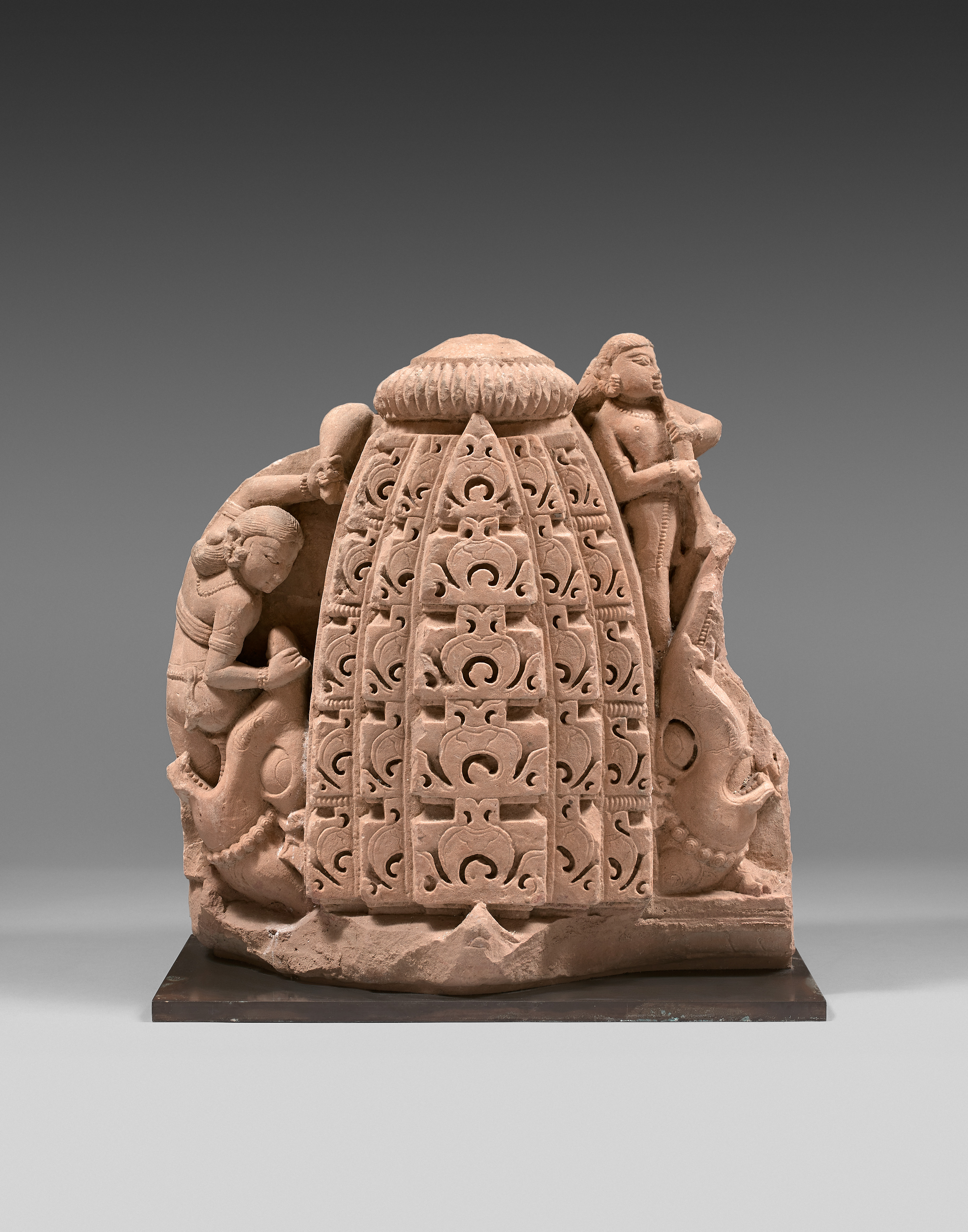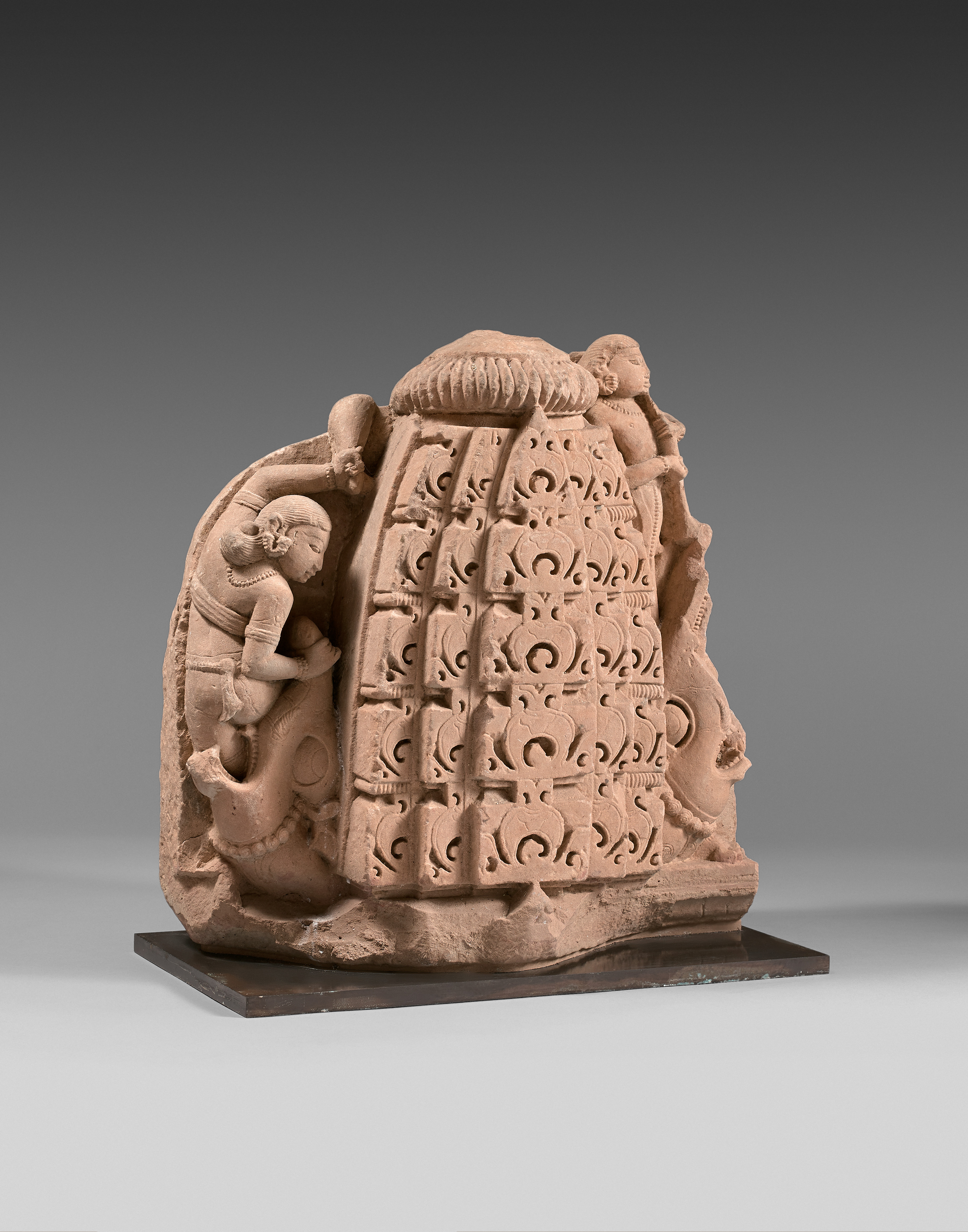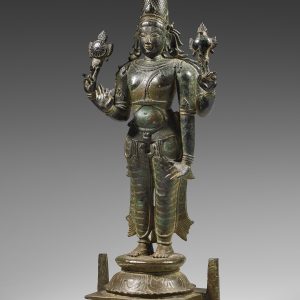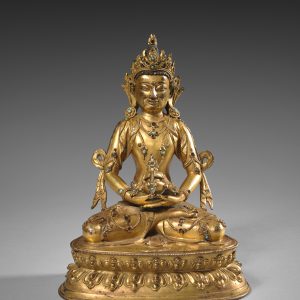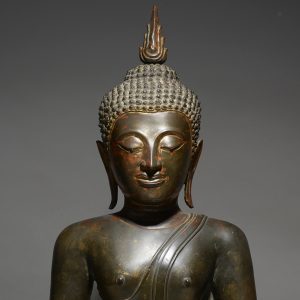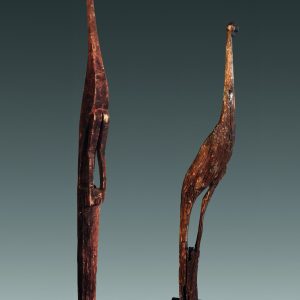Śikhara
Sandstone
India, Madhya Pradesh, probably Gwalior region
10th-11th century, medieval period
H. 42 cm
Description
This beautiful relief represents a shell tower called śikhara which is characteristic of North Indian architecture. The rose hue of this sparkling sandstone might suggest that this sculpture originally came from the Gwalior region in northern Madhya Pradesh. This architectural element, which was probably located above a niche on a temple façade, is a very symmetrical work, which is constructed, patterned and ornamented on both sides with small female figures – guardians or secondary goddesses – playing with makara, mythical and benevolent aquatic monsters.
The pattern of multiplied Indian arcs appears on five successive levels. These ovoid openings can be found in the earliest examples of Indian architecture. A large Indian arch thus opens to air and light the upper part of the façades of caves excavated as early as the 2nd century BC. Their terminology remains problematic even if some authors call them “kudu”, “hole” or “gavakṣa window”, “bay in the shape of a cow’s ear”. After a long evolution, they were multiplied to cover in fine mesh the façades of the shell towers (śikhara) built above the cellas of Hindu temples, a reduced version of which is shown here. They were placed on certain central bands during the Gupta period (4th-6th centuries) and from the 8th century onwards they covered all the upper parts, firstly at Rājasthān, and then throughout northern India during the Gurjara-Pratihāra period (6th-11th centuries).
The presence of the makara, on both sides of śikhara, seems to refer to the theme of water. These fantastic creatures of half- crocodile and half- elephant, here adorned with pearl necklaces, are indeed benevolent and prophylactic aquatic monsters. They are delicately sculpted, their eyes are widely open, their trunks are erected with small tusks and their teeth are exposed.
Two characters, one coming out of the mouth of one of the makara, the other dominating the second creature with music, could be guardians or goddesses of the rivers. The one on the right is standing on the trunk of the makara and leaning against the śikhara. She is wearing a dhoti, heavy earrings, a necklace and bracelets. The one on the left is dressed in the same way and may be holding a sack, referring to the theme of water and its purifying character. It is worth noting the pretty twist of the body, superbly energizing the relief.
Provenance: Private collection, UK, acquired from Simon Ray, 2007.

